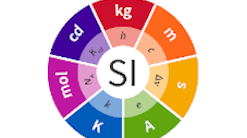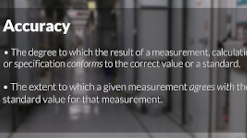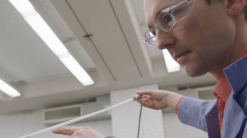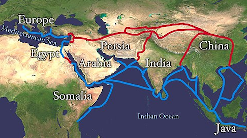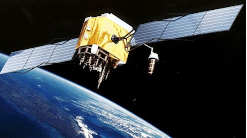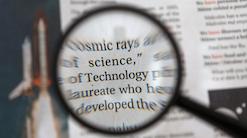
How much? How far? How long? These questions are answered by measurement. But there’s another question we must answer: How accurate? The response is often “as accurate as needed to answer the question.” Accuracy depends on a wide variety of factors, but at its core, it begins with a standard. Abandoning artifacts, today’s scientists and engineers use universal constants for the accuracy we need.
[The image shows NIST physicist Julia Scherschligt working on the NIST-on-a-Chip program, which is a suite of intrinsically accurate, quantum-based measurement technologies intended to be deployed nearly anywhere and anytime. These chips will allow instruments to perform work uninterrupted without the need for NIST’s traditional measurement calibration services.]
The National Institute of Standards and Technology helps coordinate the standardization of measurements. Let’s begin to explore the seven main areas of measurement now associated with universal constants.
Journal Thread #1 / Prompt 2 - How the Cookie Crumbles
Activities
Step into the shoes of a metrologist and discover why everything is worth measuring.
Activities
Familiarize yourself with the universal constants with these hands-on laboratory experiments.
What makes a measurement accurate? The standard! Compare measuring with sound and light, and use light to make a surprising prediction about a familiar phenomenon.
Videos
In this video, the NIST Role Models discuss the concepts of accuracy and precision.
Accuracy vs. Precision - Focus on Accuracy
Activities
Watch the video Accuracy vs. Precision and consider these questions about accuracy.
Activities
From ancient times, humans have used sound and light to measure distance. In this activity you’ll try both methods, and consider which factors affect an accurate and precise standard.
How big? How far? How long? Our methods of measurement have changed through the centuries. Long ago, most measurement tools were personal; we measured with our paces, our body parts, and what we saw and heard. Today, standards are far more constant.
NIST Role Models - Consensus Standards
Videos
Why is it important that people agree on what standards mean? The NIST Role Models explain.
Journal Thread #2 / Prompt 1 - On the Road Again
Activities
Watch the NIST Role Models explain consensus standards, then go back in time to consider the importance of agreeing on standards.
Measurement Matters - Going Back in Time
Activities
In a reading, discover the history of measurement and the standards used over time to enable humans to compare things they valued. Reflect on your ideas about the purpose and function of these measurements in discussion and mini-STEM activities.
Once people traveled by the stars. Today we travel with satellite guidance. But the key to making old and new systems work continues to be time.
Activities
In this activity, you’ll explore the unit of time and model the Global Positioning System that guides so many of our devices today.
What have you learned about measurement and accuracy? Challenge yourself with these questions.
What more can you learn about measurement and accuracy?
Accuracy Matters! First Time, Every Time
Activities
Read a NIST publication that explains why accuracy matters, and think through some follow-up questions.



